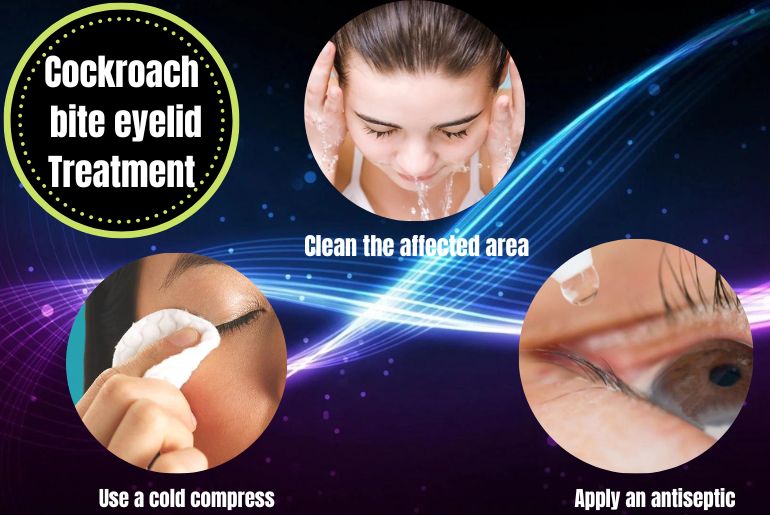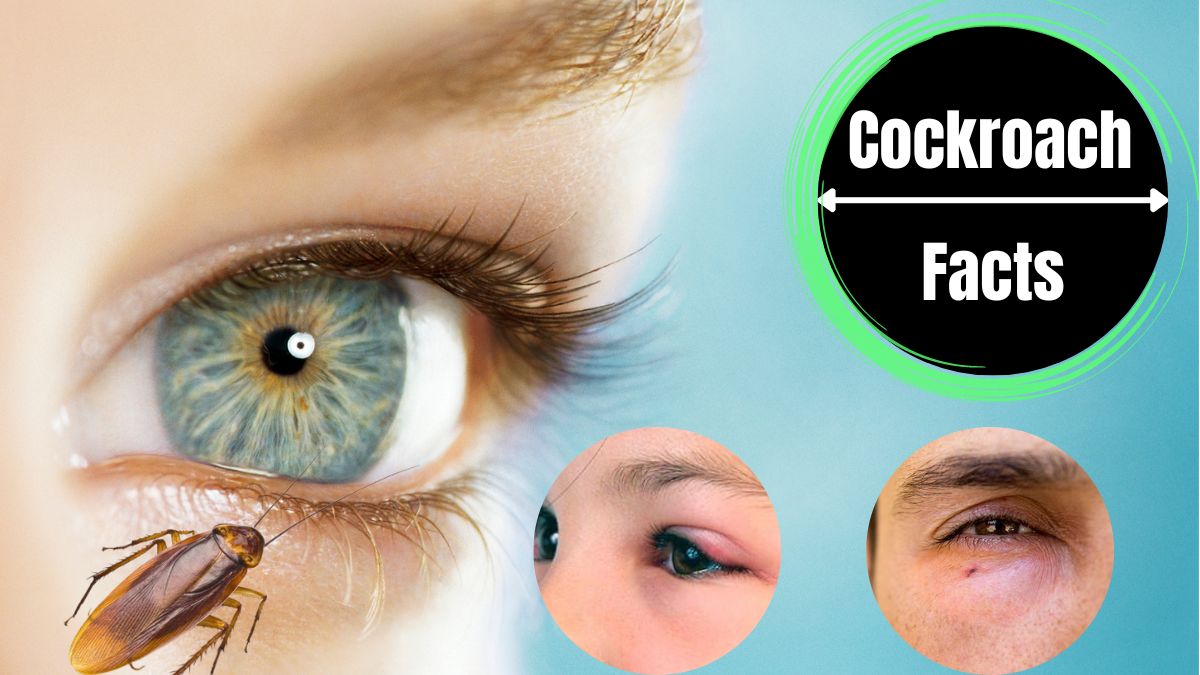Cockroaches can bite on various body parts, including eyelids. Eyelid bites from cockroaches are not common, but they can occur when a cockroach comes into contact with a person’s face while sleeping or if a person is lying still with their eyes closed. It can cause itching, redness, swelling, and pain. Sometimes, they may even lead to infection if not treated properly. To prevent cockroach bites on eyelids, you need to keep your home free of cockroaches and avoid sleeping in areas where they are. If you experience a cockroach bite on your eyelid, wash the affected area with soap and water and apply an antiseptic ointment to reduce the risk of infection.
How to Prevent Cockroach Bite on Eyelid?
Preventing eyelid bites from cockroaches requires a combination of measures to reduce their presence and limit your exposure to them. Adopt the following measures to reduce cockroach bite risks.
Maintain Cleanliness
Keeping your home clean and free of food debris and moisture is crucial in reducing the attraction of cockroaches. Regularly sweep, mop, vacuum the floors, and wash dishes promptly after use.
Seal Entry Points
Cockroaches can enter your home through small cracks and crevices, so you need to seal any gaps or holes in your walls, flooring, or baseboards. This will prevent cockroaches from accessing your home and limit their presence.
Proper Food Storage
Food is a major attractant for cockroaches, so proper food storage is crucial in reducing their presence. Store food in airtight containers, and dispose of leftovers promptly. Do not leave food out overnight; keep kitchen counters and surfaces clean and free of crumbs.
Use Insecticides Sprays
Using insecticide sprays in areas where you found cockroaches can discourage them from entering your home. Spray the insecticide around baseboards, under appliances, and in cracks and crevices where cockroaches are likely to hide.
Install Screens
Screens on windows and doors can keep cockroaches out, especially if you sleep with windows open. Ensure that screens are securely fastened and free of holes or tears to prevent cockroaches from entering your home.
Limit Lights
Cockroaches are attracted to light, so keeping lights off in sleeping areas can reduce the chances of them coming into contact with your face. Consider using a nightlight instead of a bright overhead light, and keep bedroom doors closed at night.
Cockroach Bite Eyelid Treatment

Clean the affected area
Wash the bitten area with soap and water to remove any bacteria or debris that the bite may have introduced. This will help to reduce the risk of infection.
Apply an antiseptic
To reduce the risk of infection, apply an antiseptic ointment or solution, such as hydrogen peroxide or alcohol, to the bitten area. The antiseptic will kill bacteria that may have entered the skin through the bite.
Take an antihistamine
If the bite is itchy or causing discomfort, take an over-the-counter antihistamine to relieve the symptoms. Antihistamines will reduce swelling, redness, and itching.
Use a cold compress
To reduce swelling and numb pain, apply a cold compress to the bitten area. This can be done using a bag of frozen peas or a cold towel. The cold temperature will help to numb the area and reduce any discomfort.
Seek medical attention
If you experience severe pain, redness, or swelling or develop a fever, seek medical attention immediately, as these could be signs of a serious infection. A healthcare professional can diagnose the cause of your symptoms and provide appropriate treatment.
FAQS
How do you treat a cockroach bite on your eye?
If you’ve been unfortunate enough to experience a cockroach bite on your eye, it’s important to first clean the affected area gently with mild soap and water. Avoid rubbing or scratching the bite, as it could worsen the irritation. Applying a cold compress can help reduce swelling and discomfort. Over-the-counter antihistamines and pain relievers can be taken to alleviate itching and pain. Keep a close watch on the bite for any signs of infection, such as increased redness, warmth, or pus, and seek medical attention if these symptoms occur.
Why do cockroaches bite eyelids?
Cockroaches are known to bite humans, but they rarely target eyelids specifically. Cockroach bites are typically a result of the insect feeling threatened or in close contact with human skin, as they are omnivorous and may sometimes nibble on anything they perceive as food. Biting the eyelid might occur if a cockroach inadvertently comes into contact with that area, but it’s not a common occurrence. Cockroach bites are more likely to happen on exposed areas of skin and are usually a defensive response rather than a deliberate attempt to bite.
How do you treat a bug bite on your eyelid?
Treating a bug bite on your eyelid requires caution due to the sensitivity of the area. Begin by washing the affected area gently with soap and water to prevent infection. Applying a cold compress can help reduce swelling and soothe the itching. Over-the-counter hydrocortisone creams or ointments can provide relief from itchiness and inflammation, but be cautious not to get the product into your eye. If the bite is painful, you can take over-the-counter pain relievers as directed. It’s crucial to refrain from scratching the bite to avoid further irritation or potential infection. If the bite shows signs of infection such as increased redness, warmth, or pus, or if the swelling worsens or affects your vision, it’s recommended to seek medical attention promptly to ensure proper treatment and prevent complications.

